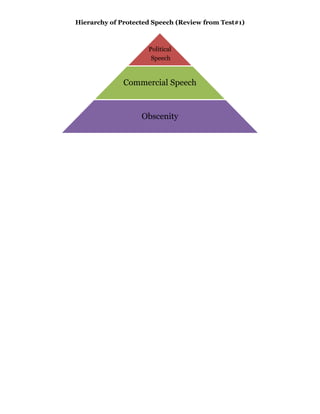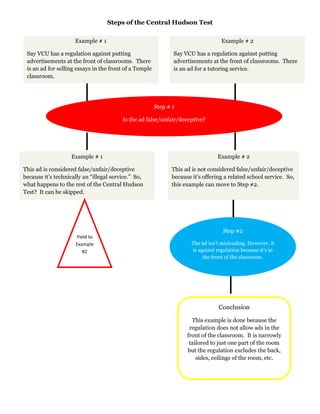Diagrams (Central Hudson Test included)
- 1. Hierarchy of Protected Speech (Review from Test#1)<br /> <br />Steps of the Central Hudson Test<br />ConclusionThis example is done because the regulation does not allow ads in the front of the classroom. It is narrowly tailored to just one part of the room but the regulation excludes the back, sides, ceilings of the room, etc.Step #2The ad isnŌĆÖt misleading. However, it is against regulation because itŌĆÖs in the front of the classroom. Example # 1This ad is considered false/unfair/deceptive because itŌĆÖs technically an ŌĆ£illegal service.ŌĆØ So, what happens to the rest of the Central Hudson Test? It can be skipped.Yield to Example #2Example # 2This ad is not considered false/unfair/deceptive because itŌĆÖs offering a related school service. So, this example can move to Step #2. Step # 1Is the ad false/unfair/deceptive?Example # 2Say VCU has a regulation against putting advertisements at the front of classrooms. There is an ad for a tutoring service. Example # 1Say VCU has a regulation against putting advertisements at the front of classrooms. There is an ad for selling essays in the front of a Temple classroom. <br />


